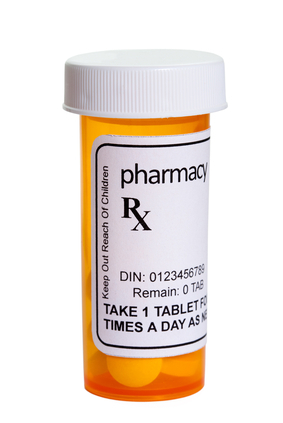Top Class Actions’s website and social media posts use affiliate links. If you make a purchase using such links, we may receive a commission, but it will not result in any additional charges to you. Please review our Affiliate Link Disclosure for more information.

In the U.S. alone, nearly 300 people a year are diagnosed with SJS, oftentimes after taking routine over-the-counter or prescription medications they’ve taken before.
The story of Danika H. highlights the horrific complications these dangerous reactions can cause. Danika almost died after suffering a severe reaction to her epilepsy medication, and is still contending with the damage it did to her skin and organs.
The Daily Mirror Online (12/4/14) reports that Danika had been prescribed two medications shortly before her 19th birthday, and on that day she noticed that her eyes and lips were swollen. Additionally, a rash had developed on her chest and quickly spread over her body.
Stevens Johnson Syndrome is extremely rare, so doctors often misdiagnose the condition when they initially encounter it. This is exactly what happened to Danika, as the doctors in Sydney misdiagnosed her condition as herpes and sent her home. Four days later, her Stevens Johnson Syndrome symptoms grew worse, and she was taken to a different hospital in New South Wales.
After several diagnostic tests, the doctors finally concluded that Danika was suffering from Stevens Johnson Syndrome and immediately began treatment. She was covered in bandages, and doctors were unsure if she would make it through the night; her mother and boyfriend stayed with her through the night.
Danika spent three weeks in the hospital with her entire body blistered, her mouth fused shut, and she lost most of the top layer of skin off her face, chest, back, and arms. Due to the nature of her injuries from Stevens Johnson Syndrome and Toxic Epidermal Necrolysis, patients like Danika are often treated the same as burn patients and require skin grafts.
Danika had trouble breathing and had to be fed through a tube, and she would occasionally vomit skin and blood. At this point, she was diagnosed with SJS’s latent form Toxic Epidermal Necrolysis (TEN), indicating that her condition could potentially worsen.
Danika suffered burns inside and outside her body, and almost all of her skin detached from her body. While she incurred skin scarring, Danika is grateful to be home and is looking forward to continuing on with her life.
Both Danika and her family criticize the pharmaceutical companies that manufactured the drugs she had taken, because they lacked any warning for SJS and TEN. They also call for more research to be done on the conditions, due to the fact that they are very rare and difficult to recognize for doctors. Even though the condition is rare, hundreds of people a year are diagnosed with SJS or TEN, and efforts should be taken to prevent the conditions.
Epilepsy Medications Linked to Stevens Johnson Syndrome
Both SJS and TEN are caused by extreme adverse reactions to one or more medications, and are more commonly seen in adults than children. They are famously characterized by the red or purple skin lesions that appear on the surface of the skin.
Stevens Johnson Syndrome skin lesions can take up to 30% of the skin while Toxic Epidermal Necrolysis can take up to 90%.
Hundreds of over-the-counter and prescription medications can cause Stevens Johnson Syndrome and/or Toxic Epidermal Necrolysis. As in the case of Danika, epilepsy medications are often implicated in these diagnoses.
The prescription drug Dilantin (phenytoin) is perhaps one of the most commonly linked epilepsy drugs to SJS/TEN.
Dilantin is one of the most popular anticonvulsants in the United States. According to legal experts, at least 100 Dilantin lawsuits have been filed by former patients who claim they developed Stevens Johnson Syndrome after ingesting phenytoin.
A study that consolidated data from 15 burn centers from across the country found that 20% of Toxic Epidermal Necrolysis cases were allegedly caused by Dilantin; 25% of these patients died from Dilantin SJS complications.
Dilantin lawsuits accuse the drug’s manufacturers of failing to provide adequate warnings to users about the risks and severity of Stevens Johnson Syndrome. Some SJS lawsuits have resulted in multi-million dollar verdicts for plaintiffs after juries found drug companies liable for their failure to warn.
Do YOU have a legal claim? Fill out the form on this page now for a free, immediate, and confidential case evaluation. The SJS attorneys who work with Top Class Actions will contact you if you qualify to let you know if an individual lawsuit or Dilantin class action lawsuit is best for you. [In general, Dilantin lawsuits are filed individually by each plaintiff and are not class actions.] Hurry — statutes of limitations may apply.
ATTORNEY ADVERTISING
Top Class Actions is a Proud Member of the American Bar Association
LEGAL INFORMATION IS NOT LEGAL ADVICE
Top Class Actions Legal Statement
©2008 – 2024 Top Class Actions® LLC
Various Trademarks held by their respective owners
This website is not intended for viewing or usage by European Union citizens.
Get Help – It’s Free
Help for Victims of Stevens Johnson Syndrome
If you or a loved one were diagnosed with Stevens Johnson Syndrome (SJS) or toxic epidermal necrolysis (TEN) after taking a prescribed or over-the-counter medication, you may be eligible to take legal action against the drug’s manufacturer. Filing an SJS lawsuit or class action lawsuit may help you obtain compensation for medical bills, pain and suffering, and other damages. Obtain a free and confidential review of your case by filling out the form below.
An attorney will contact you if you qualify to discuss the details of your potential case at no charge to you.
Oops! We could not locate your form.












